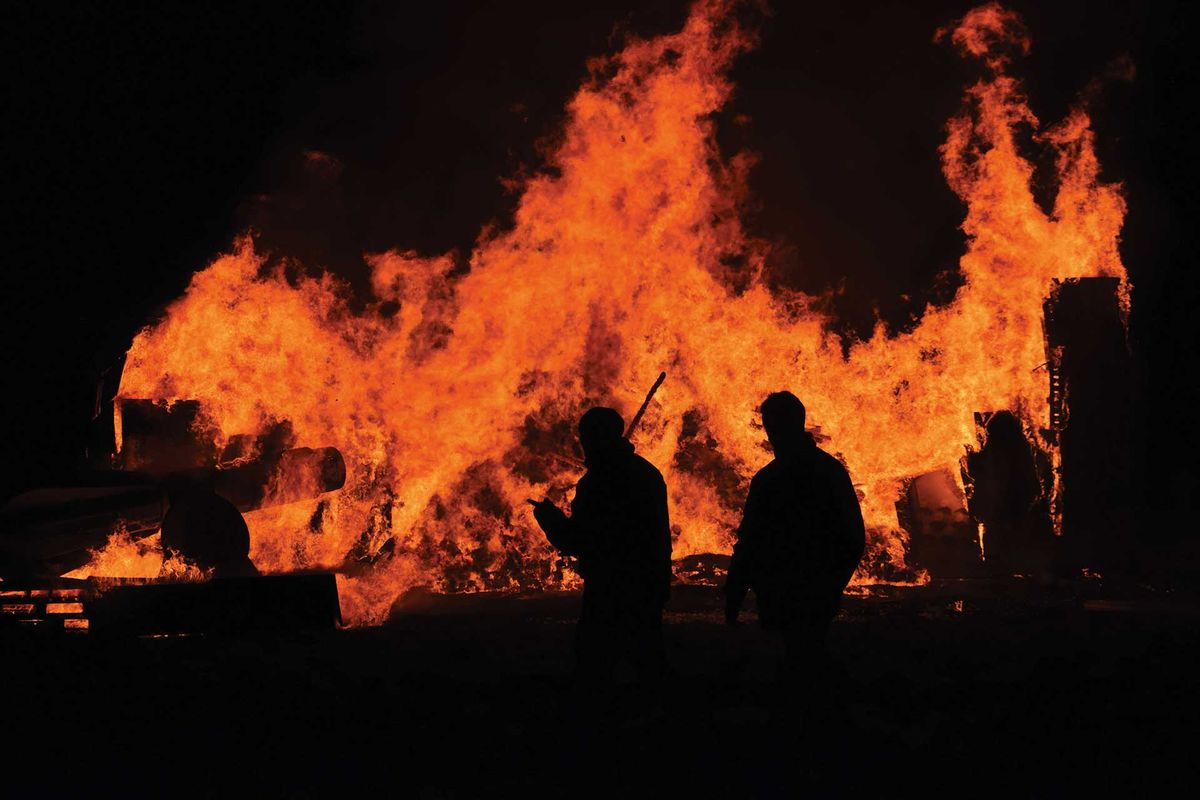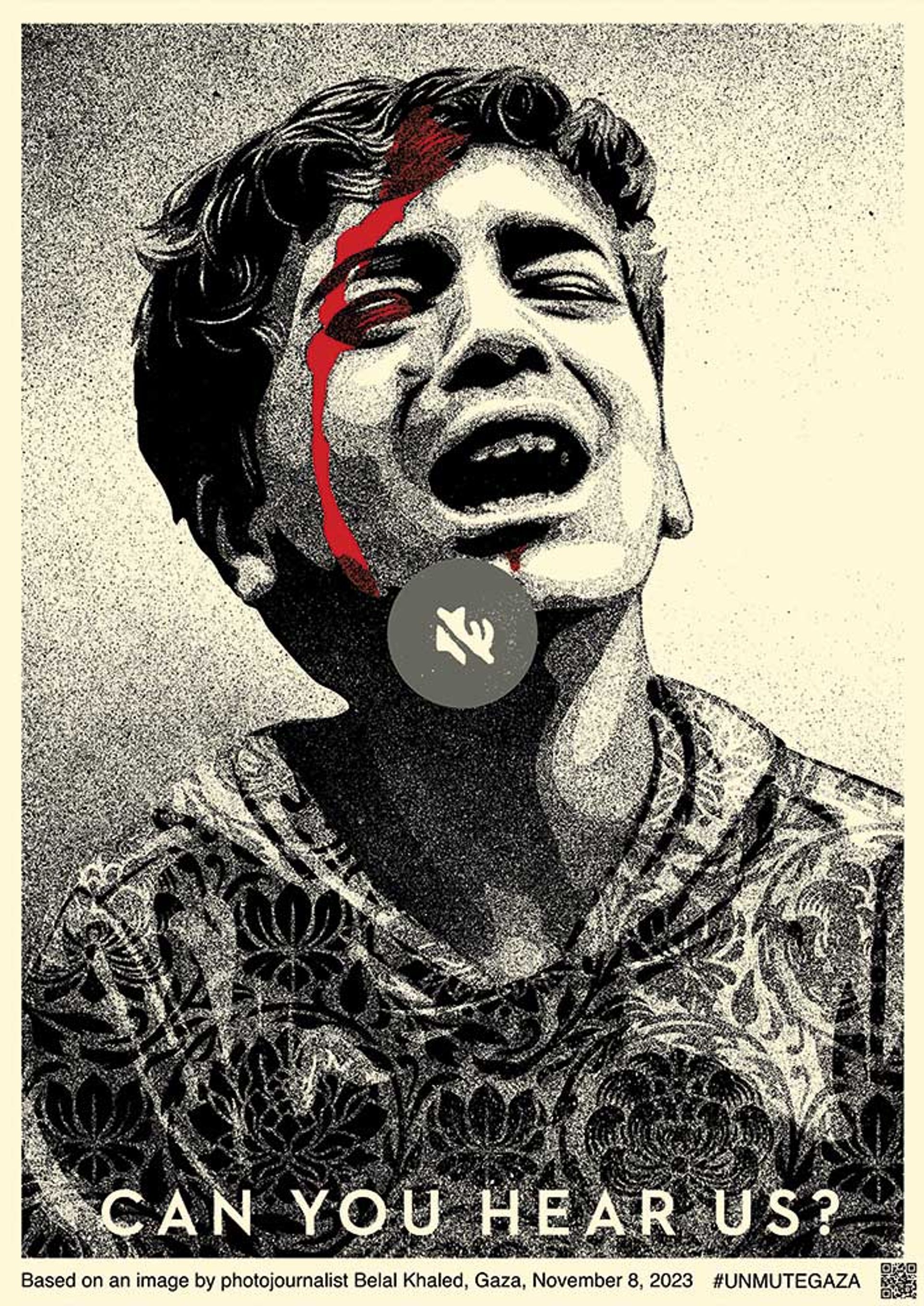 |
DAILY |
19 March 2024 |
Is the art trade choosing to ignore a wider world in crisis?
Amid threats to freedom, career moves and censorship become hard to tell apart

World on fire: with lethal wars raging in Ukraine and the Middle East, and culture wars raging elsewhere, freedom of expression is at risk
Photo © Issy Bailey
If 1848 was the Year of Revolutions, 2024 is set to be the Year of Elections. Across more than 70 countries (including the US, UK, India, Pakistan, Russia and Taiwan), more than half the world’s population is going to the polls in what The Economist has dubbed “the biggest election year in history”, with democracy itself sometimes on the ballot.
Since the Second World War, freedom of expression has been widely recognised as fundamental to any fully functioning democracy. But according to The Economist’s most recent Democracy Index, less than 8% of the global population lives in a “full democracy”, meaning a society where “civil liberties and fundamental political freedoms are not only respected but also reinforced by a political culture conducive to the thriving of democratic principles”.
With the advent of culture wars in Western democracies, lethal conflicts in Ukraine and the Middle East and an increasing number of elected governments descending into authoritarianism, this means freedom of expression is increasingly under threat both publicly and privately, even in the visual arts.
In November, for example, Lisson Gallery in London put an indefinite hold on its scheduled show of new works by the Chinese artist and activist Ai Weiwei after he posted a critical comment on social media about the US’s annual $3bn aid package to Israel.
Announcing the postponement, the gallery released a statement that “there is no place for debate that can be characterised as antisemitic or Islamophobic at a time when all efforts should be on ending the tragic suffering in Israeli and Palestinian territories”. It added that Lisson deeply respects Ai’s “support of freedom of expression”, having nonetheless felt it necessary to limit his freedom of expression at that particular moment.
“Society is increasingly becoming politically, economically and ideologically restrictive, stifling doubts and debates. This trend is evident across universities, media outlets and artistic platforms, which should ideally foster freedom of expression,” Ai says.
Arts Council England (ACE) recently updated its policies, cautioning those associated with the arts organisations it funds that “activity that might be considered overtly political or activist”—even if performed in a personal capacity—could bring “reputational risk” to ACE. Although a swift backlash from numerous artists soon led ACE to release a statement claiming it “in no way meant to limit artistic expression”, the ominous mood lingers as the funding body undergoes a government review.
“Artworks like Picasso’s Guernica or Goya’s The Third of May 1808, which are deeply political and express strong sentiments from the artist, are increasingly difficult to showcase today,” says Ai. “This difficulty arises not only from systematic constraints imposed by larger corporations and economic structures within art institutions such as museums, but also from artists’ self-censorship.”
Censorship or savvy?
Visual art is an enormously diverse realm of human creativity. But do both the commercial and institutional art worlds now feel there is simply too much risk involved in showcasing works—and artists—that directly engage with the turbulent times in which we live? Or is contemporary art today more valued as an emotional and financial haven from all this anxiety-inducing turbulence? Are artists self-censoring or just giving curators and collectors what they want?
The international array of 243 dealers exhibiting at this month’s Art Basel in Hong Kong will almost assuredly avoid showing any works of art related to the sBeijing-imposed 2020 national security law that has cracked down on free speech in the former British colony. At least 260 people have been arrested under this measure, according to a joint statement signed by more than 80 human rights organisations in December.
Art Basel maintains that it does not operate any formal vetting procedure for the content of the works at its fairs. “Gallery presentations are not subject to any such approval processes,” says Angelle Siyang-Le, the director of Art Basel in Hong Kong. “As with all Art Basel shows, our selection committee is responsible for reviewing applications and selects galleries solely based on the quality of their booth proposal and the strength of their year-round programme,” she adds. Yet one regular exhibitor at the Hong Kong fair, speaking on condition of anonymity, says dealers are careful not to show works that might antagonise the local authorities.
So it should be business as usual in Hong Kong, not least because hints of an art market rebound are emerging after the dip of 2023. The latest Confidence Survey from the London-based analytics firm ArtTactic finds that its more than 120 expert respondents “are starting to feel that the worst might be over”.
It is no surprise this sounds like a stock market assessment, particularly as it concerns the big, colourful, culturally savvy paintings that now dominate the major contemporary art fairs.
“Art has become simply just another form of investment,” says Julian Stallabrass, a former professor at the Courtauld Institute of Art and the author of High Art Lite: The Rise and Fall of Young British Art. “Well-packaged, branded artists make accessible, consistent work for the market,” he says, characterising such product as “decorative or easily provocative, often with a digestible story behind it”. Stallabrass adds that “to see art that may meet the political challenges of the moment (a high bar for any art), one would have to look outside art fairs and commercial galleries”.
From Gaza to Guernica
Unmute Gaza, a creative movement that supports beleaguered photojournalists working on the ground there during the current conflict, is one concerted creative response to these challenges. The United Nations reports that more than 120 journalists and media workers have been killed in Gaza since the Hamas terrorist attack of 7 October. In January, Greenpeace activists unfurled a huge illustration by Shepard Fairey of a screaming Palestinian child on the façade of Madrid’s Reina Sofia museum, which houses Picasso’s 1937 anti-war masterpiece Guernica. Inspired by an image taken by the Palestinian photojournalist Belal Khaled, the Fairey work was one of dozens of illustrations by more than 30 artists that Unmute Gaza has used for awareness-raising interventions in more than 80 cities around the world, as well as for prints that the public can download for free.
“Unmute Gaza builds a bridge between artists, the global public and the civilian population of Gaza,” says an anonymous spokesperson on behalf of the movement, which they describe as “a creative response denouncing government and media silence, as well as the silence of the art world at large”.
Guernica was unveiled as an official commission by the Spanish Republican government in its national pavilion at the 1937 Paris World’s Exhibition. Given our current febrile geopolitical environment, it is difficult to imagine a major artist now being able to create such an open expression of moral outrage in an institutional context, let alone at a commercial art fair or exhibition.

Shepard Fairey’s image of a Palestinian child for the Unmute Gaza movement was unfurled at Madrid’s Reina Sofia museum
Courtesy UnMute Gaza
There are no official casualty figures for the Guernica bombing raid, but most research now suggests that around 1,600 people or more were killed. Picasso was responding to a massacre perpetrated by German and Italian fascists. The democratic world then had a clear binary sense of right and wrong.
But how can an artist create and show a new Guernica or Third of May 1808 about the 1,200 Israelis killed by Hamas terrorists on 7 October or the more than 28,000 (and counting) Palestinians killed by the Israeli military since then? Would two paintings have to be made and hung side by side? Or do the reputational risks mean these morally complicated subjects are simply better avoided?
“No curator, in choosing the theme of their exhibition, seeks directly to capitalise on the hot issues of the moment, but all of them are influenced by them,” says Roberto Cicutto, the outgoing president of the Venice Biennale, who chose the Brazilian curator Adriano Pedrosa to put together this year’s international art exhibition. Pedrosa’s selection, titled Stranieri Ovunque—Foreigners Everywhere, will focus on works by queer, outsider and Indigenous artists that societies have traditionally regarded as “foreign”.
And so, in a year of elections in vastly populous countries like the US and India that could result in a further diminution of democratic values, the institutional art world understandably sticks to cultural politics, rather than politics, and the commercial art world understandably gets on with commerce. How long will the rest stay silent—or silenced?

No comments:
Post a Comment